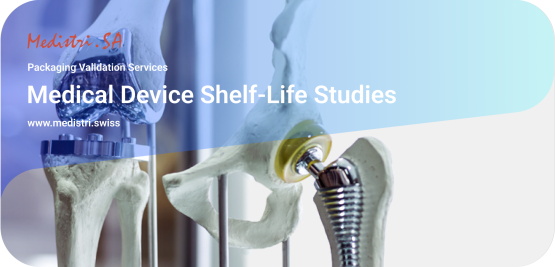(Download: Medical Device Shelf-Life Studies in PDF by Medistri)
Medical device are labeled with an expiration date that is supported by testing shelf-life data.
Medistri perform accelerated aging while performing real-time aging tests to generate shelf-life data for medical device manufacturers. This data is used in the product’s design-history files, technical dossiers and 510(k) submissions.
In order to test for accelerated aging, we significantly reduce the evaluation time by agin the materials ate elevated temperatures. Depending on the nature of the product (thermal sensitivity, biological materials, etc…), Medistri will design a more thorough accelerated aging testing plan that considers all aspects of product requirements.
There are multiple risk-areas to consider to asses the shelf life of a medical device. These include:
- Sterility Challenges
- Packaging Integrity Challenges
It is important to design a testing methodology that considers these endpoints.
Medistri’s in-house laboratory provides its customers with temperature and humidity controlled chambers for performing accelerated aging tests within a monitored and controlled environment. Our infrastructure allows us to test different product types, materials & sizes. The most common condition for shelf-life studies are 55°C without added humidity but other non-standard temperatures and relative humidities are also available depending on product specifications.
Designing a accelerated aging testing plan to determine the shelf-life of a product depends on the product specifications and product requirements. At Medistri, we consider both internal & external complexities:
- Components interactions (Internal)
- Material Degradation (Internal)
- Manufacturing (External)
- Sterilisation (External)
- Shipping & Storage (External)
Considering the challenges above, establishing the right shelf-life study for your medical device is a complex projects that involves different types of tests.
The United States Pharmacopoeia (USP) defines shelf life as “the extent to which a product retains, within specified limits and throughout its period of storage and use, the same properties and characteristics that it possessed at the time of manufacture.”
It is the duration in which a product’s characteristics can be expected to remain stable. It is important to separate “shelf-life” from a product’s “useful life”. “Shelf-Life” describes a stability expectancy prior to use. The “Useful-Life” is the duration of a product’s viability during the time of use or the number of uses.
Depending at what development-stage of your products you are before you reach Medistri for shelf-life studies, we typically work with our customers to establish the following criteria that are specificic to our customer’s product.
- Chemical
- Physical
- Microbiology
- Toxicity
- Biocompatibility
- Packaging
- Transportation
- Sterilisation
- Storage Conditions
- Special Components
ISO 11607–1 defines requirements for sterile barrier system (SBS) material selection as well as design and testing. ISO 11607–2 defines manufacturing packaging process validation requirements for forming, sealing and cleanroom assembly processes. Too frequently, medical device contract manufacturers do not include assembly process validation as part of the equation.
To learn more about our shelf life studies for medical devices & accelerated aging services, visit our website www.medistri.swiss or contact our team directly at contact@medistri.swiss or here.
- The Medistri team
#Medistri
